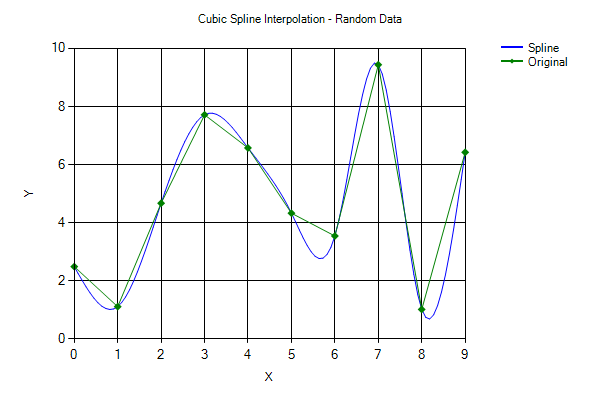Linear Program Polynomial Interpolation Example
Linear combination of nknown functions to t. The problem of polynomial interpolation can be. Example We will use Lagrange interpolation to nd the unique. Polynomial interpolation can estimate local maxima and minima that are outside the range of the samples, unlike linear interpolation. For example, the interpolant above has a local maximum at x ≈ 1.566, f(x) ≈ 1.003 and a local minimum at x ≈ 4.708, f(x) ≈ −1.003. INTERPOLATION Interpolation is a process of finding a formula (often a polynomial) whose graph will pass through a given set of points (x,y). As an example, consider defining. Simulating realizations of random variables Function approximation and interpolation 2.6.1 Polynominal interpolation 2.6.2 Piecewise polynomial interpolation 2.6.3 A two-dimensional interpolation example Linear programming 2.7.1 Graphical Solution to linear programs in Standard form 2.7.2 The simplex algorithm.
Problem: Alice chooses a secret polynomial with nonnegative integer coefficients. Bob wants to discover this polynomial by querying Alice for the value of for some integer of Bob’s choice. What is the minimal number of queries Bob needs to determine exactly? Solution: Two queries. The first is, and if we call, then the second query is. To someone who is familiar with polynomials, this may seem shocking, and I’ll explain why it works in a second. After all, it’s very easy to prove that if Bob gives Alice all of his queries at the same time (if the queries are not adaptive), then it’s impossible to discover what is using fewer than queries.
Fight Night Champion Keygen Download Free. This is due to a fact called polynomial interpolation, which we’ve seen on this blog before in the context of. Specifically, there is a unique single-variable degree polynomial passing through points (with distinct -values). So if you knew the degree of, you could determine it easily. Traductor De Office Idiomax 7.0 Serial.

But Bob doesn’t know the degree of the polynomial, and there’s no way he can figure it out without adaptive queries! Indeed, if Bob tries and gives a set of queries, Alice could have easily picked a polynomial of degree. So it’s literally impossible to solve this problem without adaptive queries. The lovely fact is that once you allow adaptiveness, the number of queries you need doesn’t even depend on the degree of the secret polynomial! Okay let’s get to the solution. It was crucial that our polynomial had nonnegative integer coefficients, because we’re going to do a tiny bit of number theory. First, note that is exactly the sum of the coefficients, and in particular is larger than any single coefficient. Tabit Version Program: Full Version Free Software Download here.
So call this, and query. This gives us a number of the form And because is so big, we can compute easily by computing. Now set, and this has the form. We can compute modulus again to get, and repeat until we have all the coefficients. We’ll stop once we get a that is zero.

[Addendum 2018-02-14: ] As a small technical note, this is a polynomial-time algorithm in the number of bits needed to write down. So this demonstrates the power of adaptive queries: we get from something which is uncomputable with any number of queries to something which is efficiently computable with a constant number of queries. The obvious follow-up question is: can you come up with an efficient algorithm if we allow the coefficients to be negative integers?
Here’s a simple puzzle with a neat story. A rich old woman is drafting her will and wants to distribute her expansive estate equally amongst her five children. But her children are very greedy, and the woman knows that if he leaves her will unprotected her children will resort to nefarious measures to try to get more than their fair share. In one fearful scenario, she worries that the older four children will team up to bully the youngest child entirely out of his claim! She desperately wants them to cooperate, so she decides to lock the will away, and the key is a secret integer. The question is, how can she distribute this secret number to her children so that the only way they can open the safe is if they are all present and willing? A mathematical way to say this is: how can she distribute some information to her children so that, given all of their separate pieces of information, they can reconstruct the key, but for every choice of fewer than 5 children, there is no way to reliably recover the key?